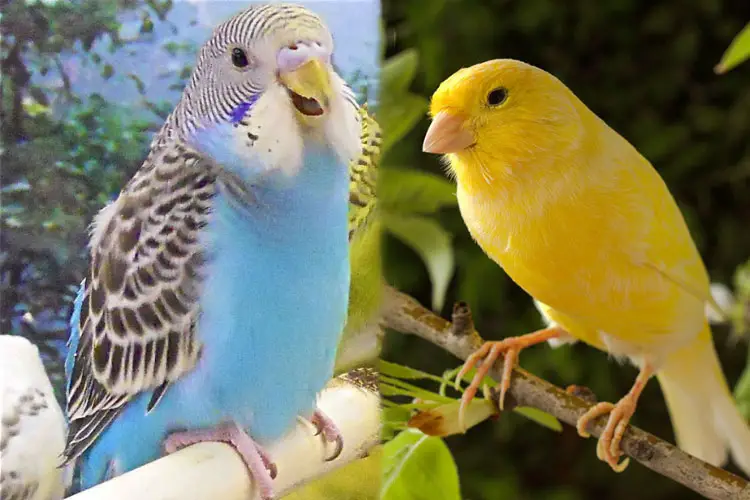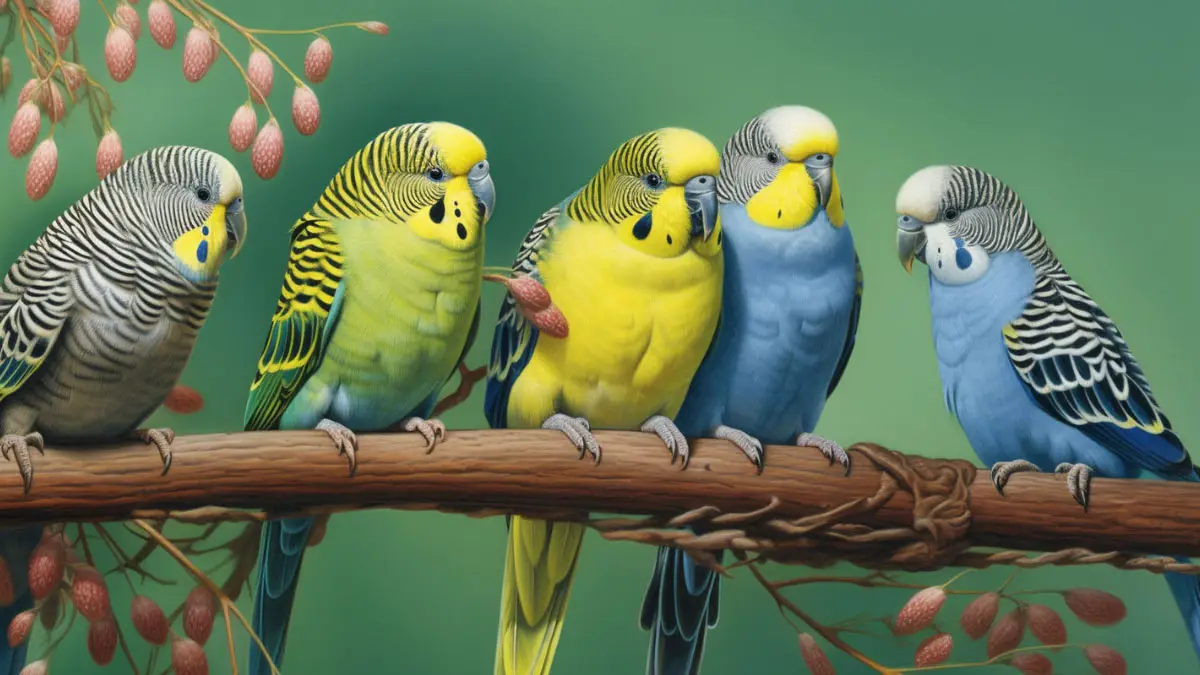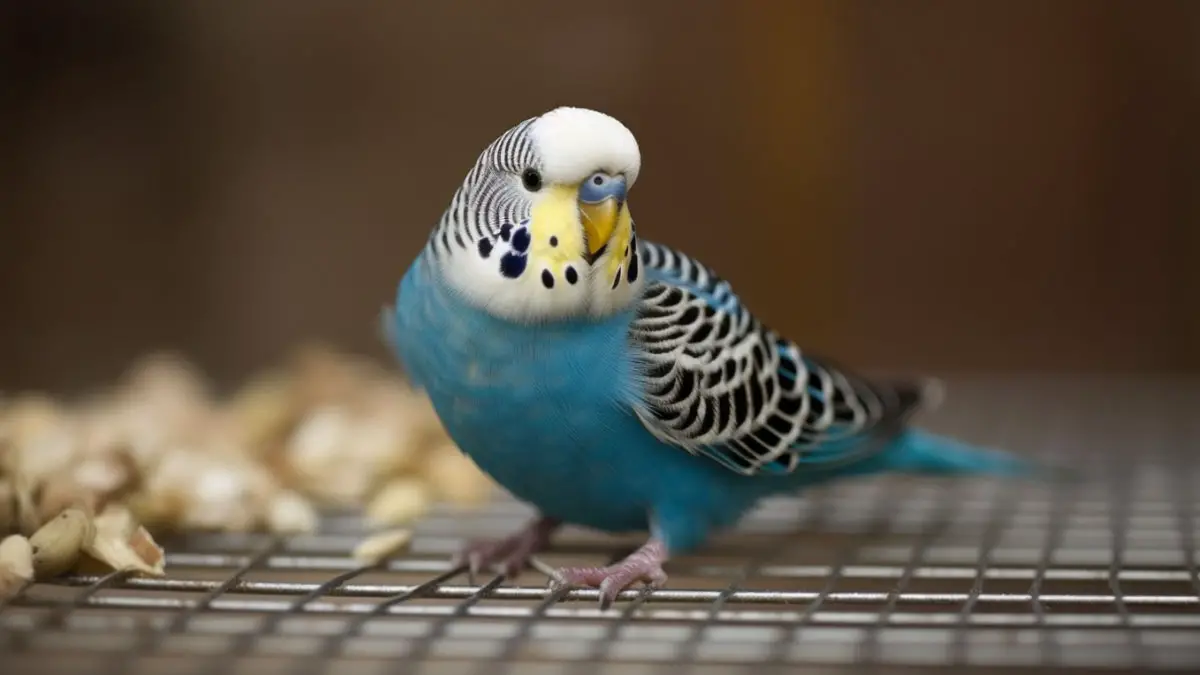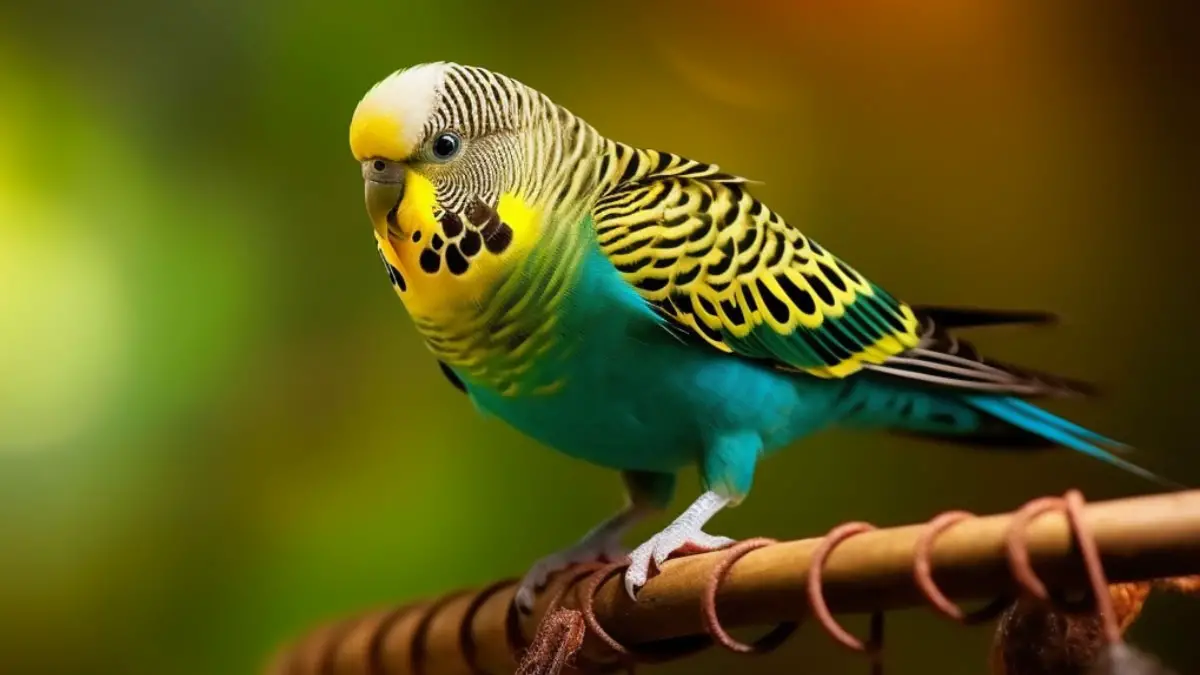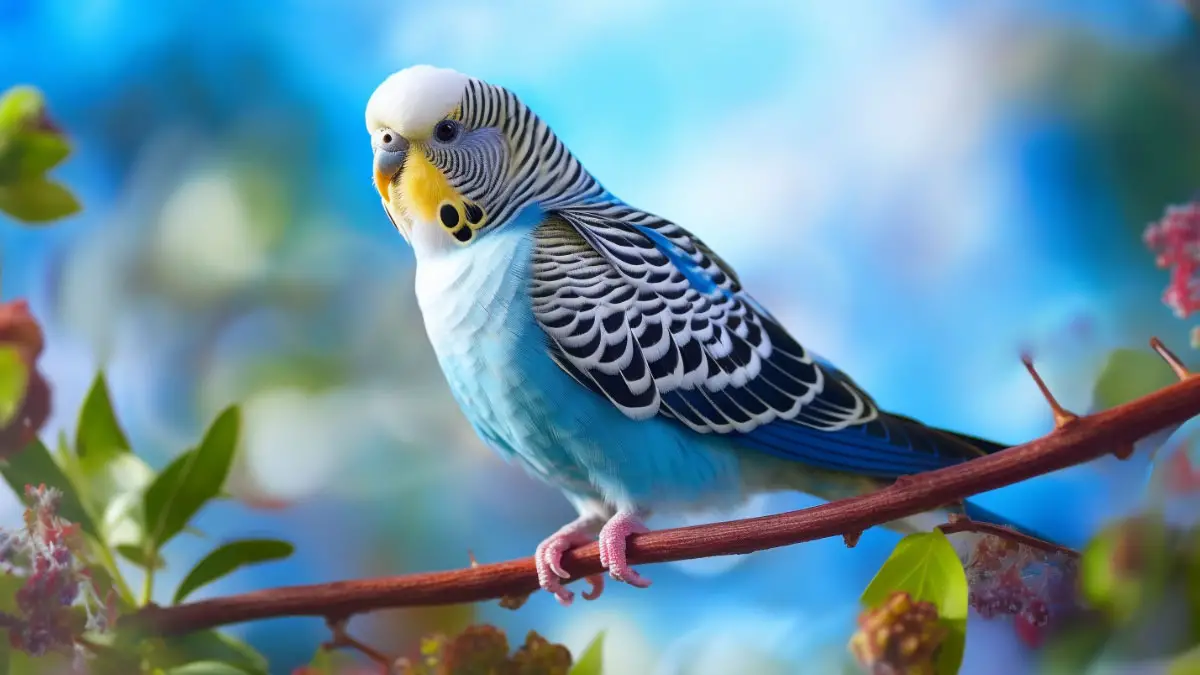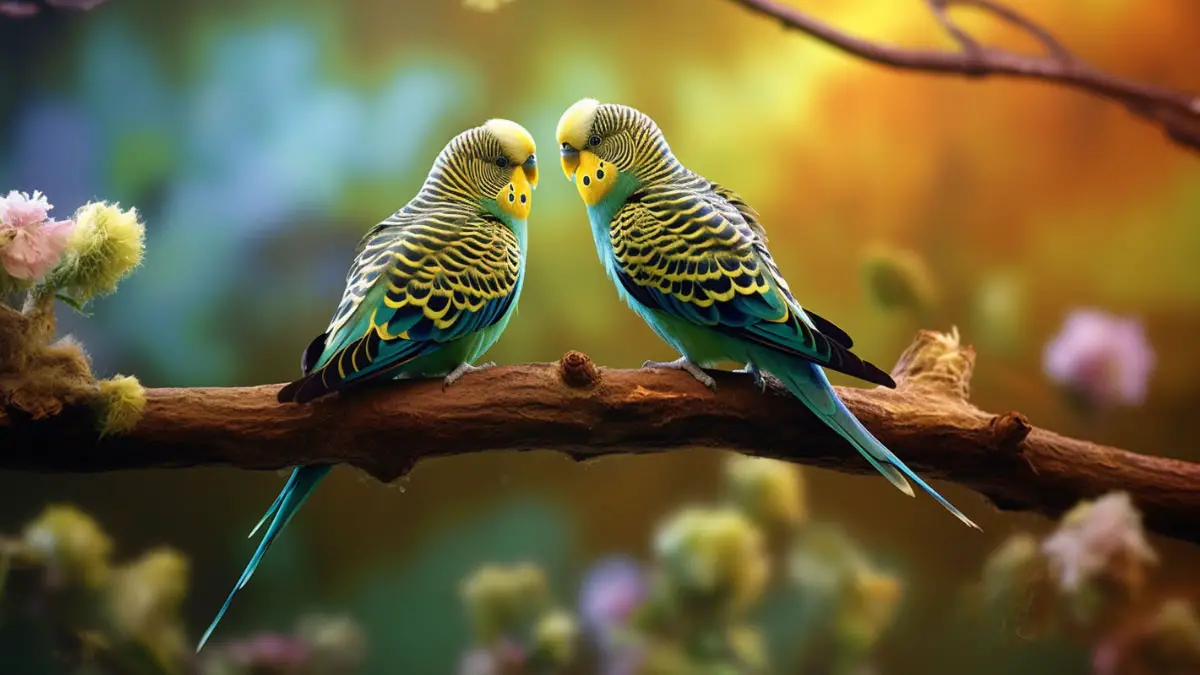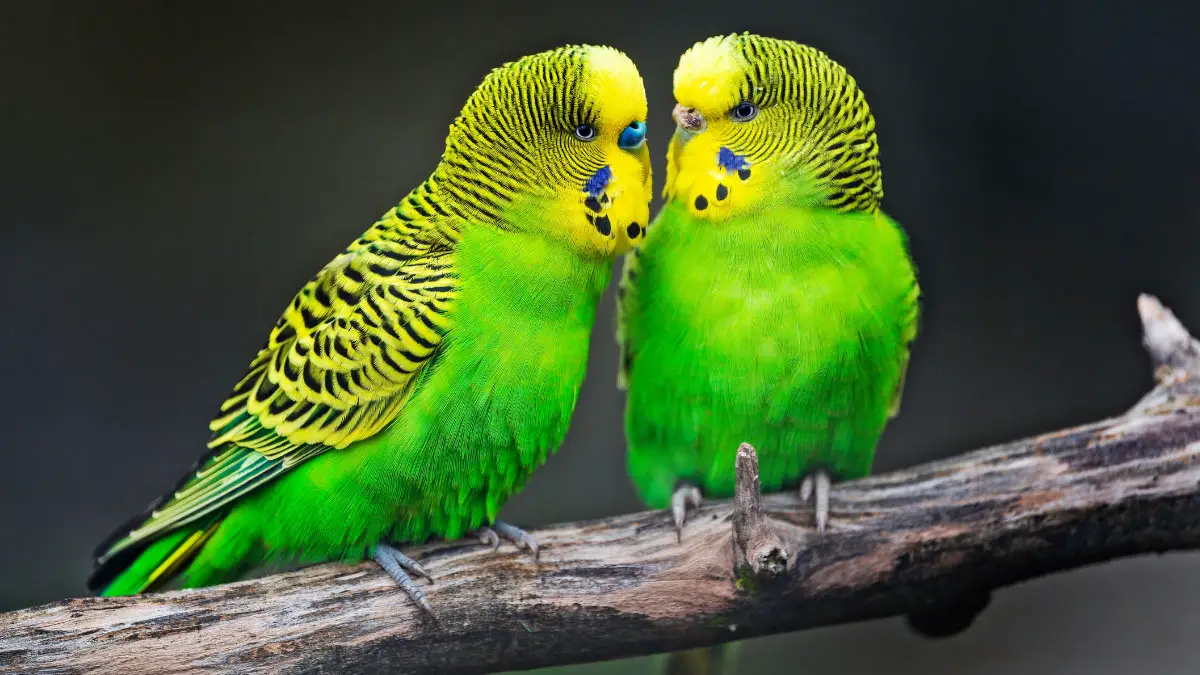Are you confused about whether to get a budgie or canary for your first pet bird? If yes, you’ll need to do lots of research before you can arrive at a final decision. Luckily, we’ve done the heavy lifting for you to help you easily pick the right pet bird for you.
Budgie vs canary have differences in their physical features, personalities, diet, and lifespan. Budgies are good talkers while canaries are good singers. Budgies are highly social and friendly while canaries like to be left alone and don’t like too much handling.
This guide takes you through more in-depth details about these two birds, including the key differences, to help you easily decide which one to get for your first bird.
Budgie vs canary comparison table:
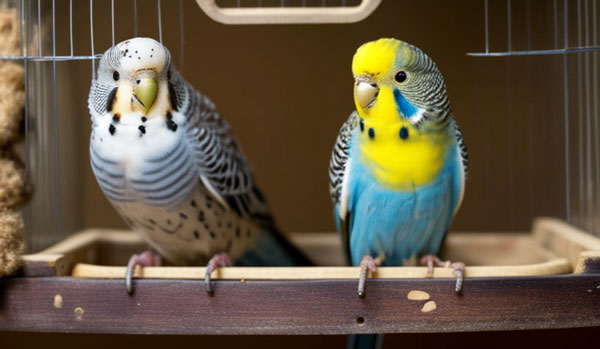
| Budgie | Canary | |
| Size | 6 to 8 inches | 4 to 8 inches |
| Weight | 1 ounce | Less than 1 ounce |
| Diet | Seeds, vegetables, and fruits | Insects, berries, fruits, and some vegetation |
| Noise level | Low | Low |
| Cost | $10 to $35 | $25 to $150 |
| Life expectancy | 7 to 10 years | 5 to 15 years |
Budgie vs canary side-by-side comparison:
Below we’ll discuss how budgies and canaries differ in terms of physical characteristics, personality, diet, temperament, life expectancy, and so on.
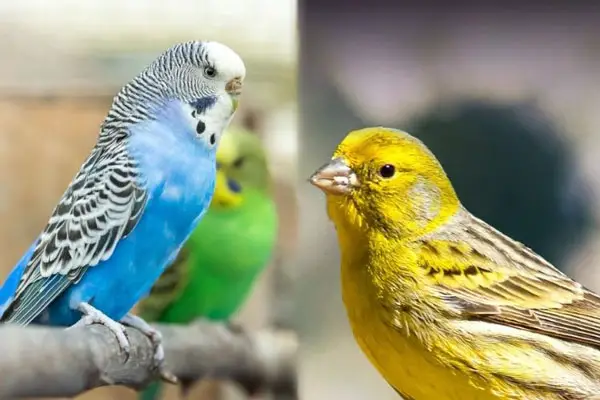
Physical characteristics
Canary birds in the wild usually have a greenish-yellow coloration over most parts of their body, while also featuring yellow underparts. However, due to selective breeding, the captive canaries are now available in a wide range of colors including yellow (this is the most common color for domestic canaries), red, orange, and white.
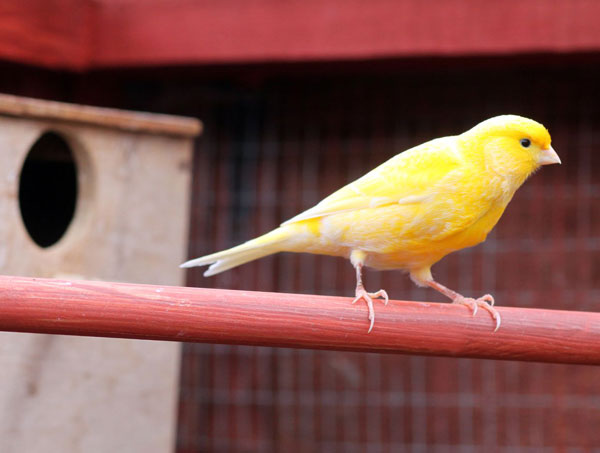
Wild budgies mainly have green coloration with dark striping and markings and blue tail feathers. Just as with canary birds, the breeders have taken advantage of color mutations in these species to produce budgies with a variety of shades including white and blue, and green and yellow colorations.
Personality
Budgies and canaries have unique personalities which set them apart. The canary is a playful charming pet bird. But it’s also solitary and not fond of too much handling or cuddling by its owner.

The parakeet is more active, playful, and not noisy compared to other parrots. The budgie is also quite loving and will need regular attention from you (up to 2 hours of daily interaction or more).
Temperament
Canaries are generally timid pet birds. And unlike the larger pet birds, they don’t like “heavy handling.” But they’ll appreciate occasional handling. These pet birds will enjoy watching you and interacting with you from their cages.
Keep in mind that canaries can be quite territorial, so you should be cautious if you plan to keep more than one canary in the same cage. Dominance can become a hard habit to control for your pet bird and the submissive bird will be on the receiving end.
Budgies are known to be gentle and docile pet birds. They’re friendly towards their owners and require your attention every day for about 2 hours. This will help keep them from getting lonely.
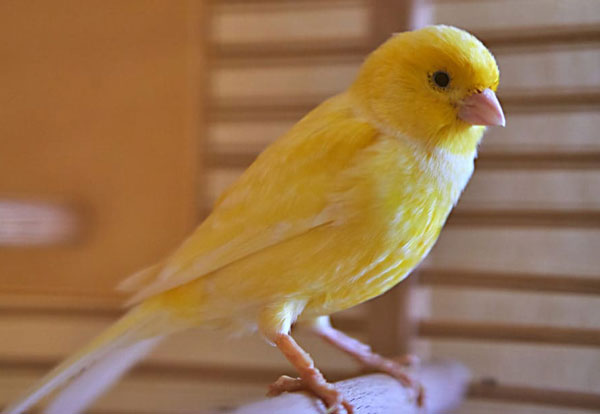
They’re pretty easy to tame, especially if you acquire them at a young age or if the breeder tames them from a young age.
The parakeets aren’t hostile towards fellow budgies, so you can comfortably house them in pairs.
However, keep in mind that your budgies may not bond well with you or mimic your speech well if they have the company of their fellow budgies.
Budgie vs canary care requirements
Budgies are quite active and playful, so you should provide them with a large cage. This will ensure they have sufficient room for flying, eating, playing with toys, and even sleeping.
The perfect cage should have bar spacings of around ½-inch or less to prevent your birds from escaping or getting stuck. If possible, get your budgies a horizontal cage bar to enable them to easily climb and exercise.
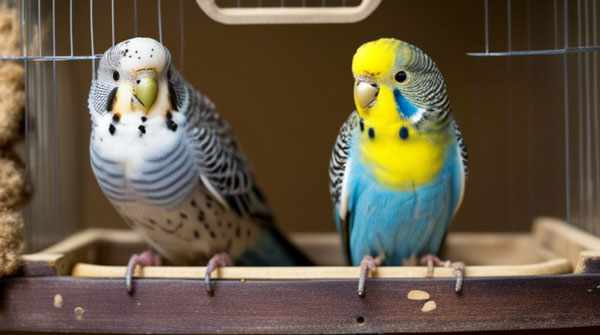
Include some perches of varying sizes, textures, and shapes in the cage, and be sure to space them such that your pet bird can easily move between them.
Other items to include in the cage are a nest for sleeping on, wallet and food dishes, a variety of toys, and some items for your budgie to chew on.
Even when you provide your pet bird with the best cage setting available, you should still consider giving it time for paying and socializing outside the cage. Flight is also a natural part of the bird and enables it to exercise.
However, ensure the area where your budgie flies in is safe and secure. You should also supervise your bird’s out-of-the-cage moments.
Canaries require a cage that’s longer than it’s wide to provide sufficient flying space for your pet bird (canaries love flying, a lot!). The cage should have ½-inch wide spacing to prevent your bird from escaping or getting caught in between.
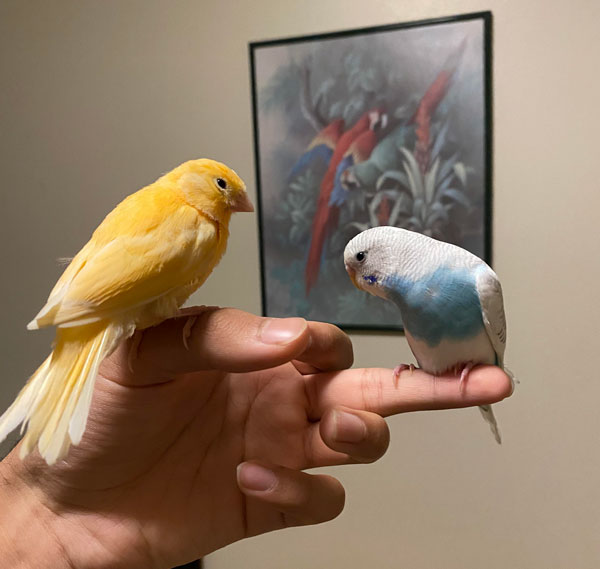
Like budgies, these birds also require to fly to exercise outside the cage.
Don’t forget to enrich your canary’s cage with wood perches of varying sizes, a variety of toys, water dish, and feeding dish.
Diet
Your captive canary will do well with a diet of a good quality seed mixture specially formulated for the canaries. You can also offer it some commercial canary pellet food but it may prefer seeds more.
Remember to supplement your canary diet with vegetable greens and fruits daily. You can also provide it with hard-boiled eggs occasionally for a protein supplement. Above all, your canary should have access to clean water at all times.
Domestic budgerigars require an almost similar diet to the canary bird. You should provide it with a quality seed mixture. However, you shouldn’t entirely feed your budgies on seeds as they’re high in fat.
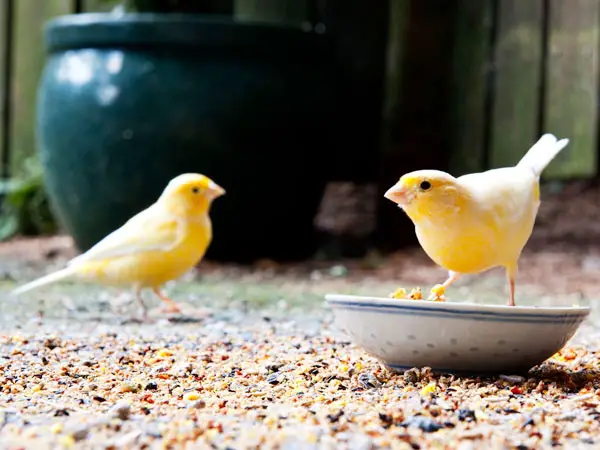
You can also give your budgies a pelleted diet as they’re usually nationally balanced. You can mix seeds and pellets. be sure to complement its diet with other food types including fresh vegetables and fruits.
Speech and vocalizations
The budgies excel at mimicking human speech. You’ll be surprised that they can learn a few words and mimic your human speed. Not only that, but they’re also good at mimicking other types of sounds that they constantly hear in your house, e.g. the door creaking, squeaking chair, etc.
Canaries are not talkers like budgies but are good at singing. Male canaries, in particular, love singing happily and can even sing elaborate songs! Female canaries mostly chirp, and will not sing during molting periods.
Life expectancy
The average life of a canary bird in captivity is around 10 to 15 years. The long lifespan means you should be committed to taking proper care of your canary for over a decade.
Males usually have a longer lifespan than females. Coincidentally, they’re the ones who sing, so you’d be listening to their happy songs for a pretty long time.
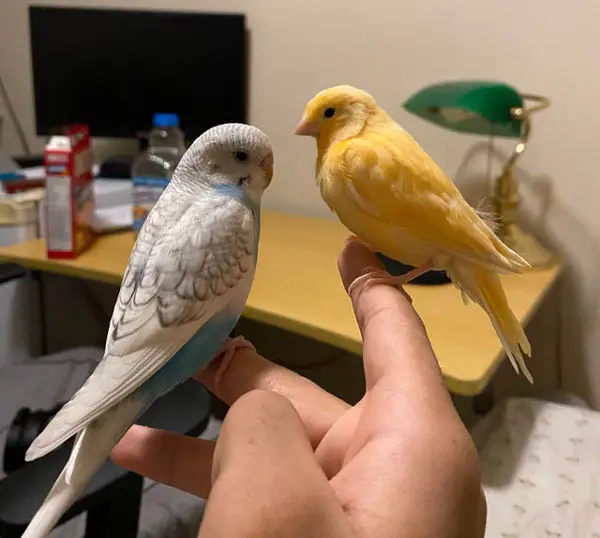
Female canaries that don’t breed for long may also live as long as the males. But if bred, they can go for approx. 6-year lifespan.
The average lifespan of a budgerigar in captivity is 7 to 10 years. You can help extend the lifespan of your budgie by taking good care of it, providing it with a healthy diet, ensuring regular exercise, taking it to the vet for routine checkups, and so on.
Can you put canaries and parakeets together?
It’s not recommended to put canaries and parakeets together. This is because they’re completely different types of birds with unique personalities.
As we’ve seen above, budgies are social and appreciate attention while canaries are loners who like to be left alone.
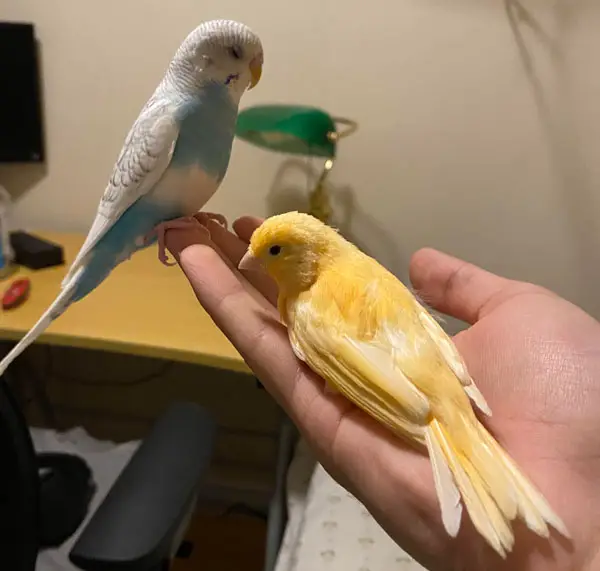
They’re also quite territorial. Keeping two canaries in the same cage—leave alone putting a canary and a budgie together—can be challenging as one canary shows dominance over the other and lead to fights.
If you still want to have both types of birds, then you should house them in a large aviary where each bird enjoys its own space away from the other.
Or you can look for two birds that are sitting next to each other without fighting.
FAQs:
No. Budgies and canaries belong to completely different species of birds and have major differences running from their physical attributes to unique personalities, diet, temperament, talking abilities, and even lifespans.
Budgies and canaries have almost similar diets, so you can give them the same food. However, their diet has slight differences in nutritional compositions, so we advise you to get food specially formulated for each species of bird to ensure they get a well-balanced diet for good health.
No. Budgies cannot breed with canaries because they heavily differ genetically and won’t produce viable offspring. Parrots in general can only breed with other parrots in their respective taxonomical families.
Final Verdict
Budgies and canaries are popular pet bird species for beginners. However, they exhibit completely different personalities. The canary is a loner, with solid color plumage, and a good singer. The budgie is more outgoing and affectionate compared to the canaries and boasts a bicolor plumage with a crest. It is also a good talker and you can train it a few words.
Hopefully, this guide has given you sufficient insights to help you decide whether to get a budgie or a canary for your first bird.
